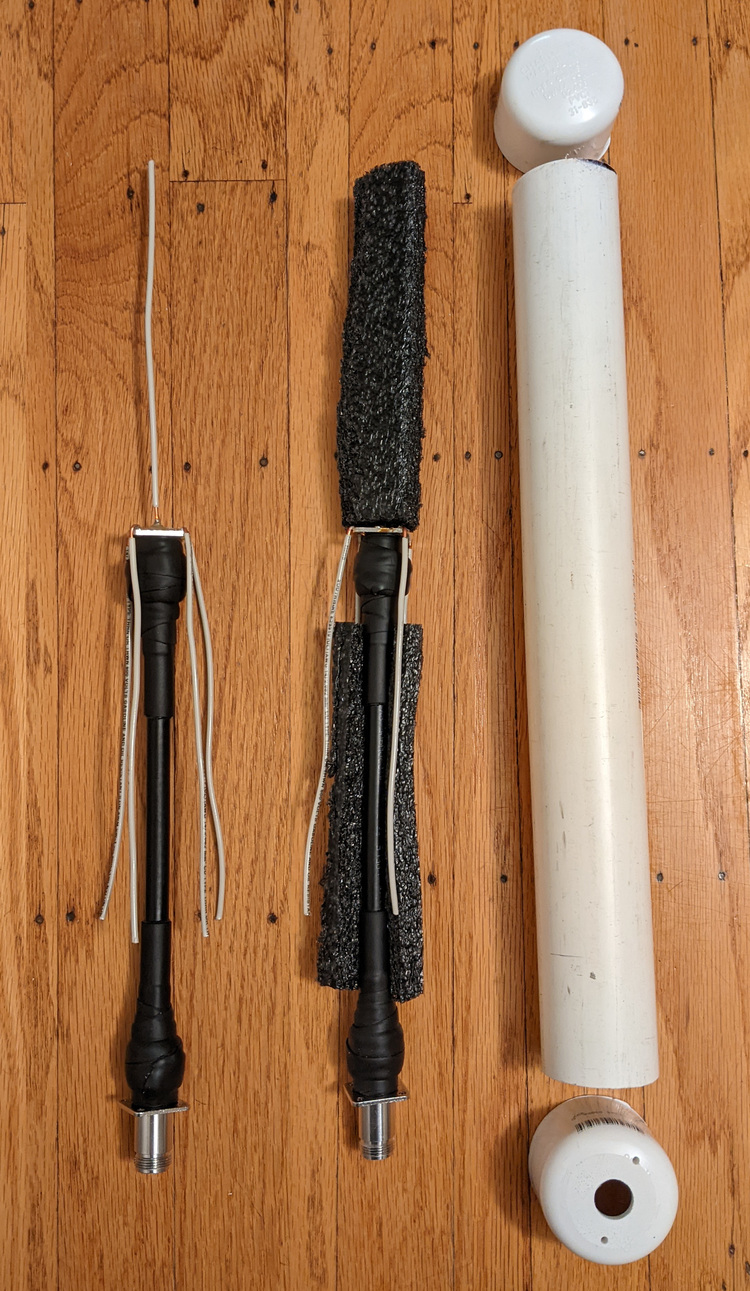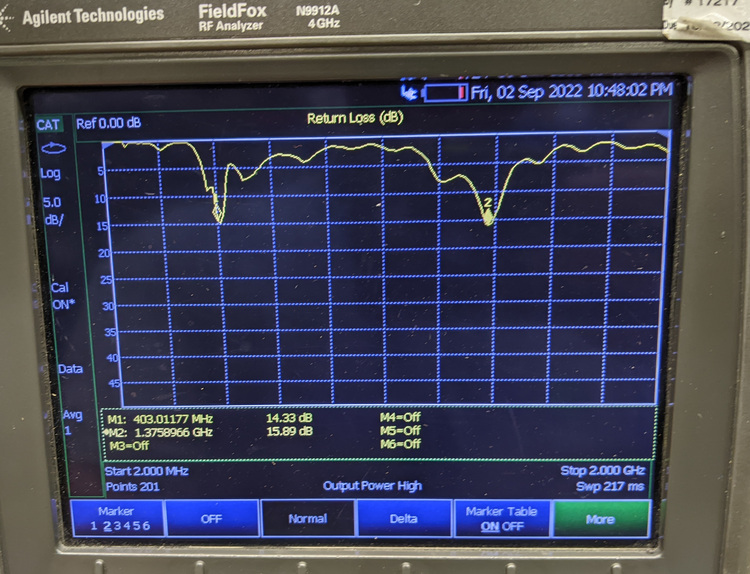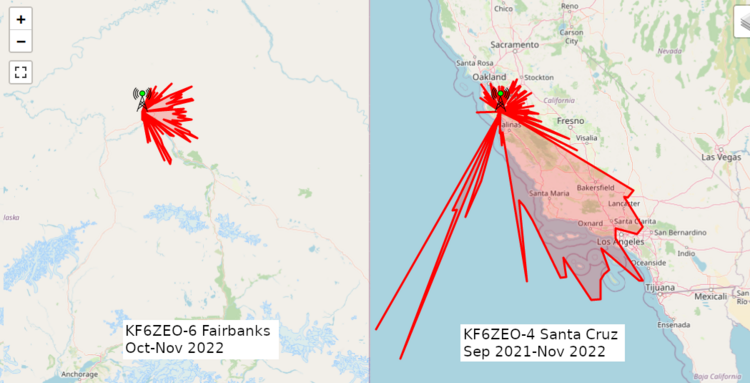After my visit to Fairbanks, Alaska back in July 2022, I chatted with a friend who lives in Fairbanks. He agreed to host a radiosonde receiver at his house just north of town. Since I wasn't traveling to Fairbanks again in 2022, I shipped him all the parts necessary for the installation.

This station is the standard Raspberry Pi and RTL-SDR Blog v3 that I have been shipping around to Houston and other sites. radiosonde_auto_rx runs inside a docker container, which makes it trivial to install and update the software. For remote monitoring and control, wireguard is the way to go.
Antenna
My go-to antenna for radiosonde receiving is a quarter-wave ground plane antenna. They are super easy to build, very inexpensive, and work better than commercially-made antennas.
But a home-made quarter-wave vertical antenna has one major flaw: ice. Ice buildup on the elements will not only cause it to detune, but there is also a potential for mechanical failure. Hardware store 14-gauge copper wire just isn't strong enough to hold up ice.
Since Fairbanks gets a lot of snow and ice in the winter, I needed a more robust antenna. After searching the internets, I found some commercial antennas that were close to 400 MHz. However, due to the great Supply Chain Crisis of 2022, the two-month lead times were too long for the required timeline.
I decided to make a standard quarter-wave ground plane antenna, but fold the ground legs down and slide it into a PVC pipe. Luckily, a flange-mount N connector barely fits inside a standard 1-1/2" PVC pipe. I wrapped the elements in foam to keep them separated and in the proper location, and epoxied a flange-mount N connector on the bottom end cap.
When making an enclosed antenna, always leave weep holes at the bottom. This prevents the antenna from filling up with water, which could short or detune the antenna, or freeze in the winter and burst the housing. The two weep holes can be seen next to the N connector hole in the pic above.
The S11 return loss of this antenna looks pretty good. 14dB return loss is equal to a 1.5:1 SWR, which is good. I consider anything better than 10dB acceptable.
Unfortunately, during shipping the N connector got jammed back into the PVC hole. I guess I didn't put enough JB Weld on the inside mounting flange, or maybe I should have used a small screw into the PVC end cap.
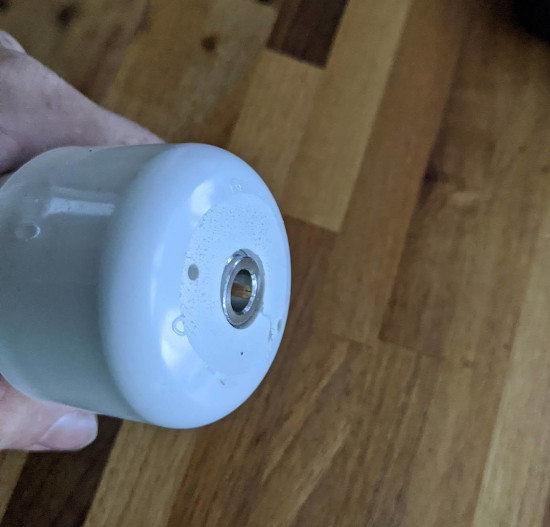
Station Performance
The station has been online for about 2 months, and it reliably receives radiosondes soon after they are released from the autolauncher at the airport. However, the max distance received by this station is about 80 km (50 miles). At this distance, the radiosondes are still ascending when signal is lost, which is indicative of a very poor antenna. No object is blocking the antenna.
In hindsight, I should have done more testing of the antenna before shipping it to Fairbanks. While the S11 return loss of the antenna looks good, it must be the PVC "radome" that's causing problems. All of the twice-daily launches from Fairbanks International Airport are received soon after balloon release, but coverage is limited to about 80 km from the receiving site.
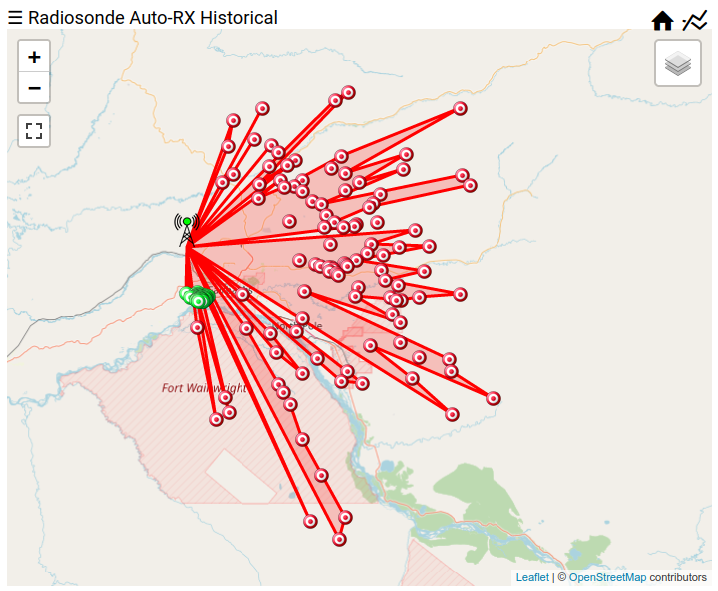
Compare this performance to my radiosonde receiver in Santa Cruz, where the "local" Vandenberg launch site is about 300 km south. Once the radiosonde ascends above ~4,000 meters (below the signal is blocked by the curvature of the earth), they are received until the curvature of the earth obscures the signal on the way back down. The furthest reception of this station was ~750km off the coast of Mexico, which is right at balloon bursting altitude (~30k to 35k meters). The Santa Cruz station has the same type of antenna, just not inside a PVC pipe.
Here is a map comparing the coverage of the two stations, using the Historical page on radiosonde_auto_rx with the same zoom level.
Once springtime comes and the temperature rises above "extremely cold", I plan on shipping a new antenna to the site.
